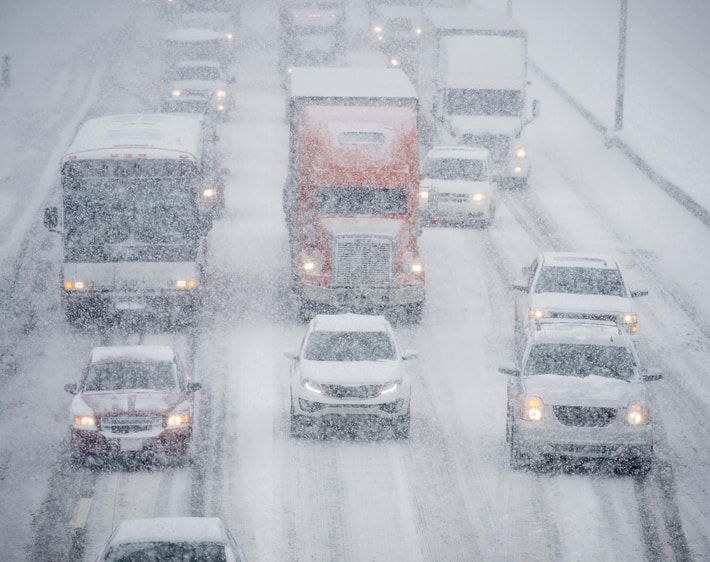Driving through Colorado in the winter looks drastically different from road tripping in the summer. Winter road conditions can get dangerous quickly—especially if your vehicle isn't adequately prepared!
On September 1, 2019, the Colorado Department of Transportation (CDOT) unveiled a new Colorado traction law to protect drivers and keep roadways open during the colder months. Read on to find out if you and your vehicle are ready for the change.
What is the Colorado winter traction law?
The 126-mile stretch of I-70 between Dotsero and Morrison sees a high volume of spin outs and accidents in winter months. Since it's one of the most important roadways in the state for smooth traffic flow, Colorado lawmakers saw a need for stricter traction laws in this area.
Accordingly, CDOT implemented I-70 chain law and traction rules. These regulations specify that ALL drivers traveling on this stretch must have adequate tire tread and/or carry appropriate traction tools in their vehicle, regardless of weather conditions. The law states that this requirement is in effect from September 1 to May 31.
The new Colorado traction law applies to ALL roads and Colorado State Highways. Drivers not traveling on the specified stretch of I-70 are required to meet these requirements only in adverse weather conditions.
How to meet traction law requirements
Between September and May 31, the law requires that all cars must have properly designated snow tires, mud and snow (M+S) tires, OR four-wheel or all-wheel drive transmission. Snow and mud tires should have the appropriate manufacturer markings (the tire sidewall will have "M+S" or a mountain and snowflake symbol).
Additionally, all tires must have a minimum tread depth of three-sixteenths of an inch.
Keep in mind that you should always have alternative traction devices handy when trucking through Colorado’s colder season! The state’s chain law (different from the winter traction law) requires every passenger car on the road to carry tire chains or AutoSocks during severe winter storms. It’s the last precaution authorities take before shutting highways down entirely!
Are your tires compliant with the traction law?
The new Colorado tread law specifies that all tires must have at least three-sixteenths of an inch of tread depth. If you're not sure how much tread depth your tires have, try the quarter test. Stick an upside-down quarter into your tire’s tread (so that George Washington goes in head-first). If you can’t see the top of his head, your tread meets the three-sixteenths of an inch requirement set by the traction law. Repeat this test in multiple places on the tire to make sure there is no uneven wear. If you can see George’s head any-wear, it’s likely time to get new tires!
All out of quarters? Head to your nearest Firestone Complete Auto Care. Our technicians can quickly and easily let you know how much tread depth your tires have. If you do need new ones, consider Weathergrip all-season tires, Blizzak WS90 tires, or Blizzak DM-V2 snow tires. These and other Blizzak tires are engineered to give your vehicle optimal grip on the road so you and your passengers can stay safe—even in Colorado's all-too-common winter storms.
Observe Colorado's traction law
If these new traction requirements are confusing or overwhelming, trust the experts to ensure your tires comply with winter traction laws in Colorado. Head to a Firestone Complete Auto Care location in Colorado, and our technicians will help keep vehicle on track to satisfy Colorado’s traction law.



